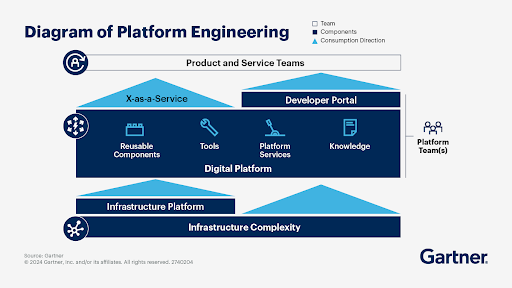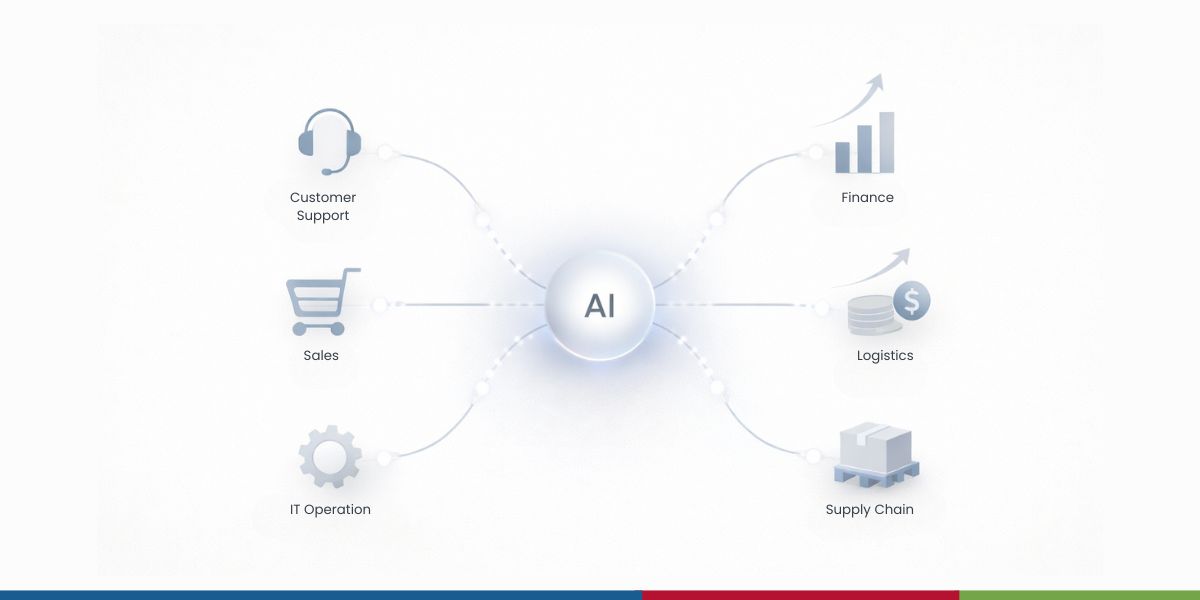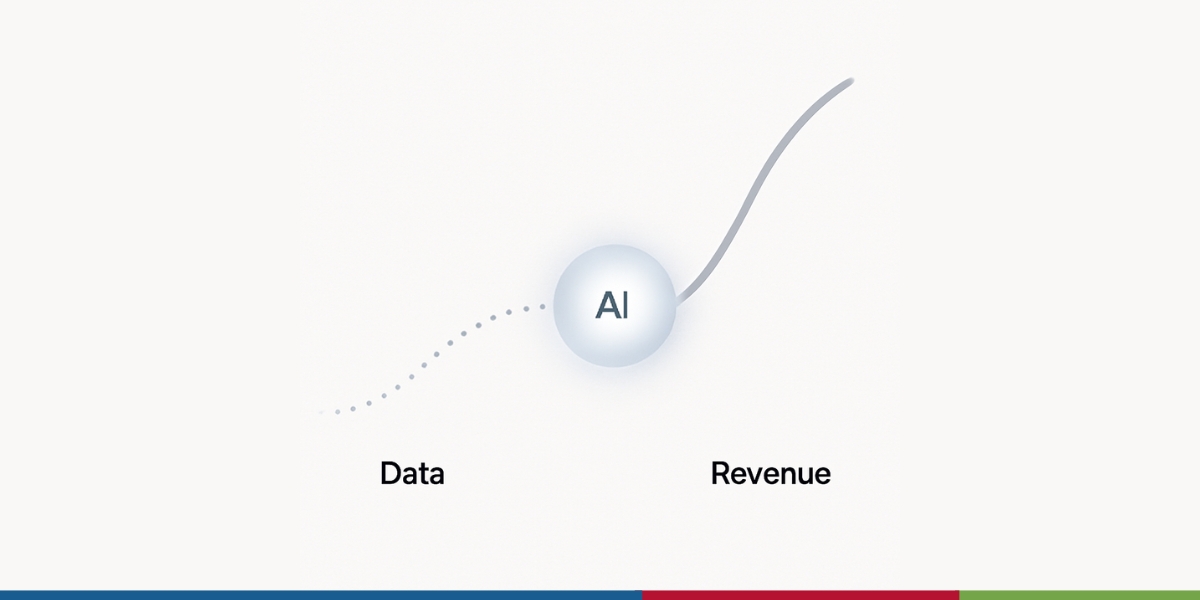AI in the Trenches: Revolutionizing Cybersecurity with Machine Learning

4 min read | By Nishali M | 17 October 2025 |
The U.S. leads in AI cybersecurity due to its strong digital economy and frequent cyberattacks.
Source: Grandviewresearch
The landscape of AI cybersecurity has changed in such a way that the traditional firewalls and other rule based systems are no longer effective in providing protection against the modern threats. Advanced malware, coordinated risk management and data breaches on one side and advanced AI driven solutions on the other are fueling the need to capture and contain threats in real time. This all is possible with machine learning in cybersecurity.
By combining AI threat detection, predictive security, and cybersecurity automation, enterprises are strengthening their defenses. This blog highlights how machine learning is changing the cybersecurity landscape, its uses, the advantages, the challenges, and what the future of cybersecurity in the AI-driven world might be.

Source: Grandviewresearch
How is Machine Learning Used in Cybersecurity?
Cybersecurity leverages machine learning to bolster digital defense. This is accomplished through identifying potential threats from huge data sets. Machine learning greatly surpasses traditional rule-based systems. Rule-based systems are static and rely on signatures. On the other hand, machine learning models adapt and learn from new data. Machines can then be trained to identify and flag unfamiliar threats. Examples of these potential threats might be erratic network traffic, phishing attacks, or even new forms of malware that don’t look similar to existing signature-based malware.
Fraud AI cybersecurity, and suspicious transaction monitoring can be carried out using AI in real-time. AI-based response automation can be integrated with machine learning detection of breaches from anomalous behaviors in such a way that alerts can be escalated and managed to ensure faster responses. It understands the usual behavior of the system and highlights actions, language, device access, or behavior that differs from the baseline. The use of machine learning in AI cybersecurity threats detection is a breakthrough in protecting systems, as it allows for evolution and adaptation to emerging and more complex cybersecurity attacks.
Key Applications of Machine Learning in Cybersecurity
Modern security systems incorporate machine learning for the purpose of identifying, addressing, and dealing with security issues as efficiently as possible. On the other hand, these systems function on a threat adaptation model and integrate with legacy systems, providing a level of security that is superior to traditional methods. Some of the main uses include:
- Threat Detection: Identifies zero-day attacks and sophisticated threats by monitoring anomalies in traffic and user behavior.
- Malware Detection: Detects known and unknown malware families beyond traditional signature-based approaches.
- Phishing Detection: Scans emails, URLs, and web content to detect and block malicious intent.
- Anomaly Detection: Monitors irregular account activity or suspicious user behavior.
- Fraud Detection: Flags unusual financial transactions using user history and behavioral analysis.
- Automated Incident Response: Prioritizes alerts, filters noise, and recommends remediation steps.
Major Benefits of Using Machine Learning in Cybersecurity
| Advantage | Description |
|---|---|
| Detection of Threats in Real-Time | Recognizes cyber threats and suspicious activities instantly. |
| Detection of Unknown Attacks | Identifies zero-day and advanced persistent threats undetectable by older methods. |
| Reduced False Positives | Improves accuracy by distinguishing between legitimate and malicious activity. |
| Adaptive Learning | Continuously learns from new data to strengthen protection. |
| Faster Incident Response | Automatically prioritizes alerts and recommends quick fixes. |
| Scalability | Processes large volumes of data efficiently with minimal resource use. |
| Cost Effectiveness | Reduces financial losses from breaches and manual audits. |
| Fraud Reduction | Helps businesses detect and prevent unusual financial activity. |
Challenges Faced in Machine Learning For Cybersecurity
As in all technology, AI in cyber security has numerous advantages, and a few drawbacks that may lessen those advantages.
- Data Quality: Machine learning models suffer when trained on partial or unbalanced data sets.
- High False Positives: The proven ability of machine learning to link benign activities to threats offers some comfort. On the other hand, it can prove to be a monumental task for security teams to handle.
- Adversarial Attacks: It is possible to take advantage of ML by relocating input data. This is done to make the ML models get the data miss-classified such as images formatting with other images.
- Issues with Scalability: For more resourcing data streams, which are more complex than ever, ML models require even more computing power to run and process.
- Model Transparency: It is hard to trust models when the “black box” mechanism of models makes it difficult to analyze the output or the reasoning behind the model.
- Changing Attack Risks: New attacks will train new machine models, causing neoteric attacks to become obsolete.
- Resource Intensive: The training of new support systems needs to be staffed with specialists, increasing costs.
- Data Privacy and Compliance Risks: The use of sensitive data for training always poses a compliance and privacy risk.
The Future of Cybersecurity and AI
AI will change the cybersecurity landscape and offer a faster, smarter, and more adaptive form of protection. Unlike the traditional methods of security, AI will bridge the gap between reactive methods and proactive threat intelligence and will identify risks before they grow. With automation, the detection, analysis, and response to threats will be quicker and will place less strain on management teams. The real-time behavioral analysis will aid in the detection of insider threats and complex attacks, while adaptive defense systems will evolve in their response to attack methods. Known vulnerabilities can be scheduled for protection with the autonomous security of an organization and with the growth of cloud and IoT systems, safeguarding the connected systems will rely on AI. By endorsing zero trust paradigms and cooperating with human experts, AI can help make a solid, intelligent, and future-ready cyber security future.

Source: Grandviewresearch
Wrap Up
Rapid advancements in machine learning and cybersecurity are the two hottest topics. Together, machine learning and cybersecurity fix security problems and build new adaptive security systems. Machine learning enables advanced threat detection, automated security, and risk predicting vulnerabilities. The advantages of using machine learning far exceed the negatives, even if that may still include data quality, interpretability, and resourcing problems. The use of AI for cybersecurity is far more proactive, and automated. The possibility of redesigning the future of cybersecurity allows organizations to stay ahead of more complex cyber-attacks.
Most frequently asked FAQs
With threats being detected in real-time along with their analysis with the capability of giving an instant, automated reaction to attacks, AI no doubt enhances the state of cybersecurity.
AI security tools are specific software solutions, such as intrusion detection systems and malware analysis tools, that use AI and machine learning to detect and counter cyber threats.
By assisting with quicker detection of threats, reducing false positives, automating tasks, and even helping to predict attack vectors, AI is improving cyber defense.
AI threat intelligence can be described as the use of AI methods to gather and analyze data about possible cybersecurity threats in order to predict and mitigate them.
AI is used in fraud detection by analyzing user behavior, transaction patterns, and anomalies to identify suspicious activities in real time.
The latest from our editors
Join over 150,000+ subscribers who get our best digital insights, strategies and tips delivered straight to their inbox.


